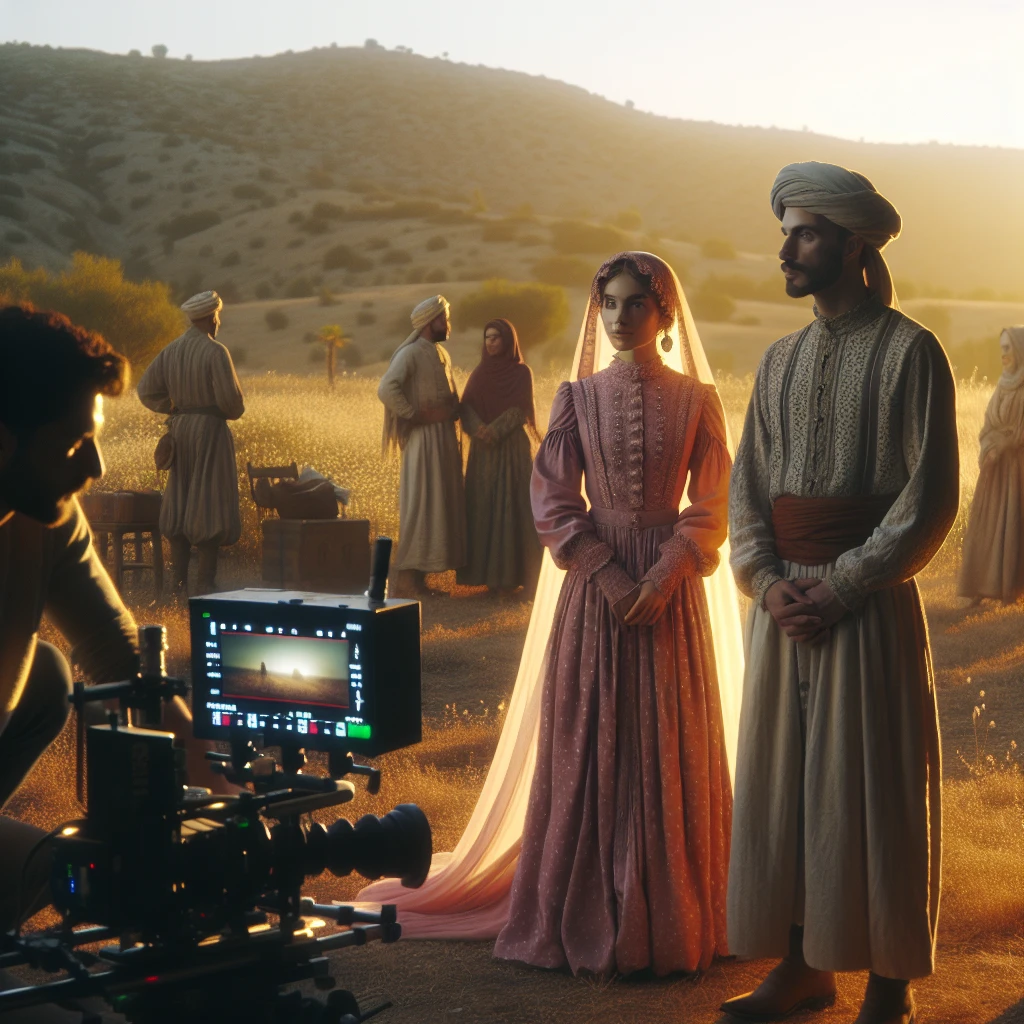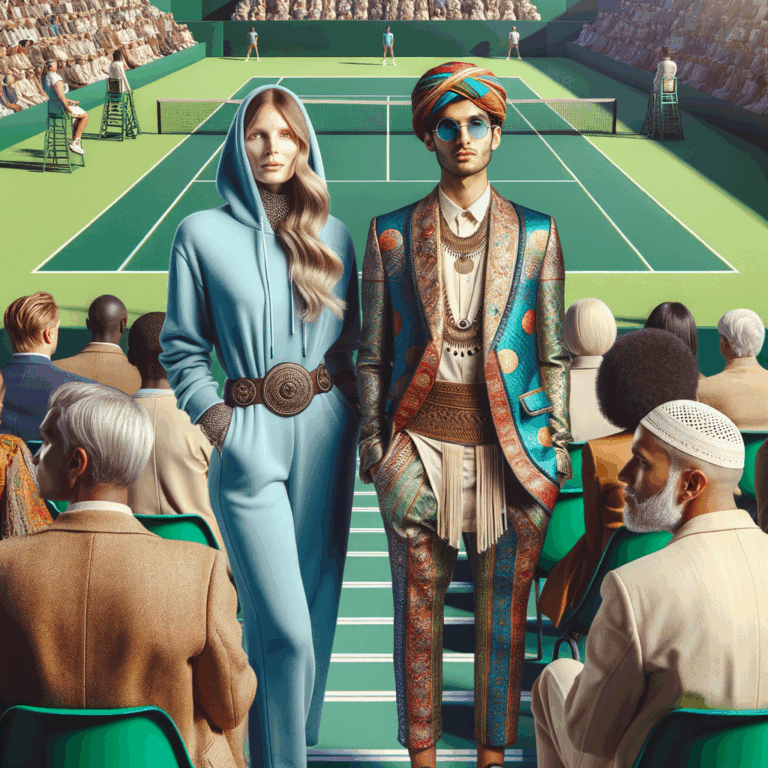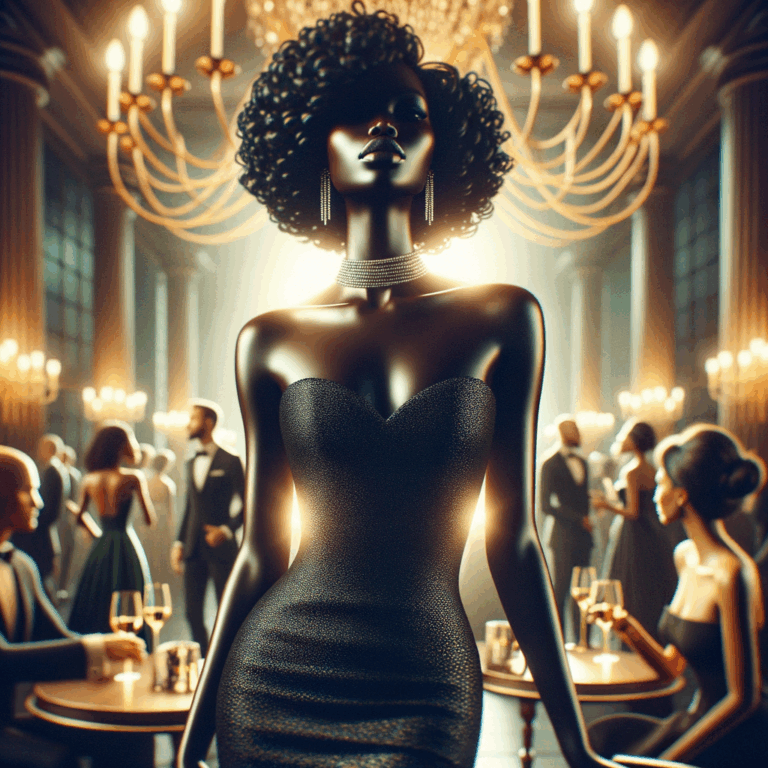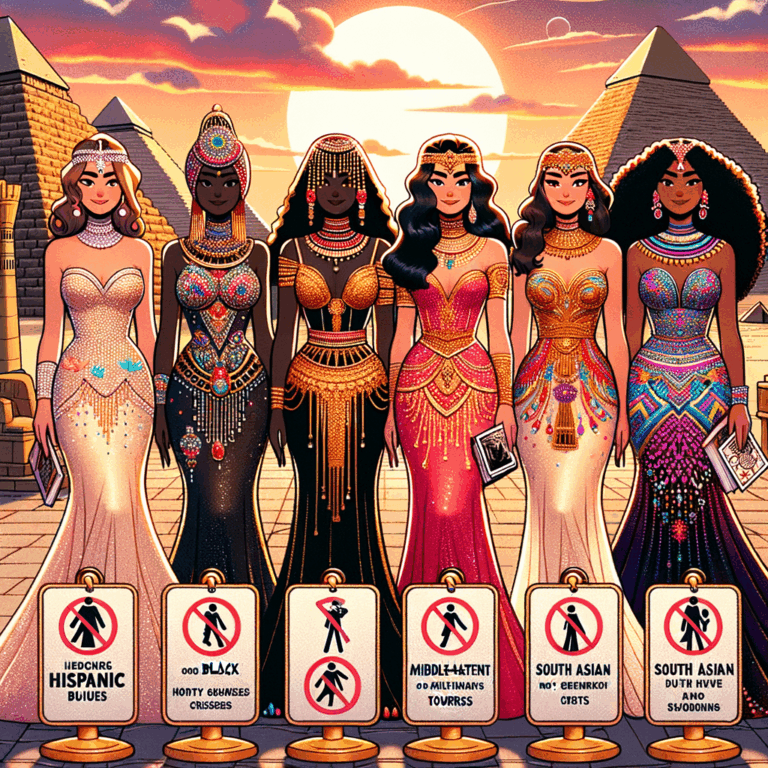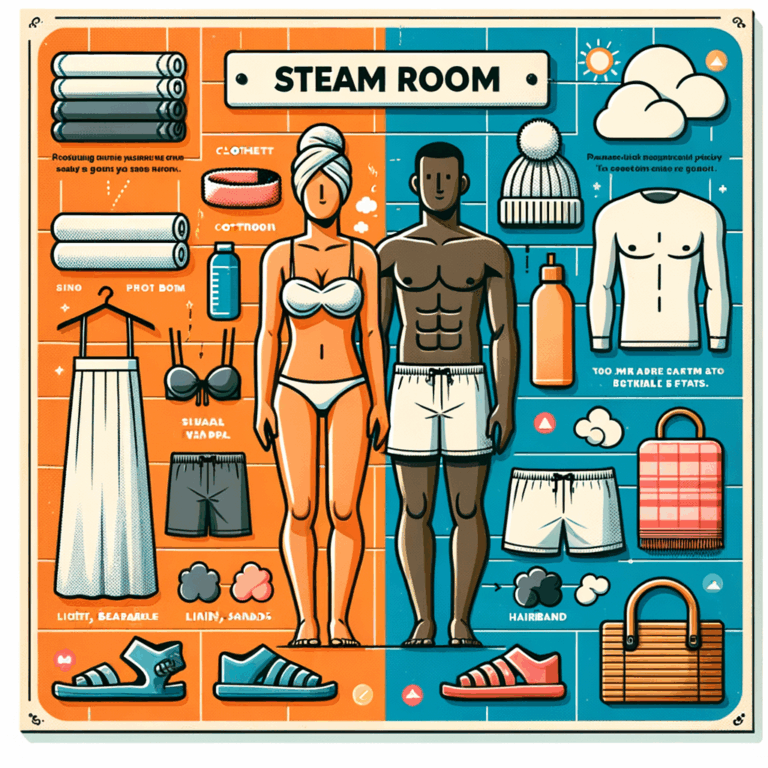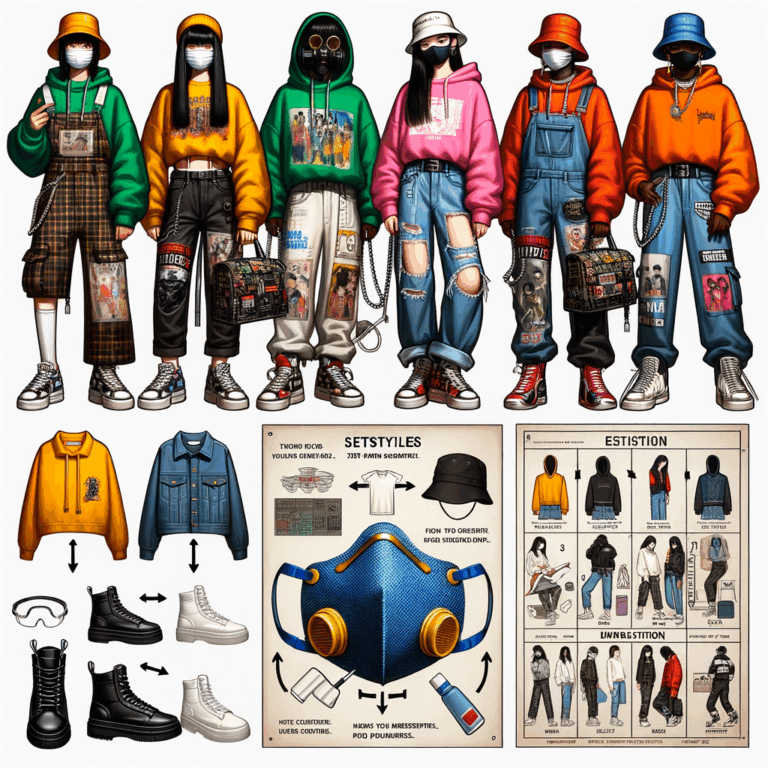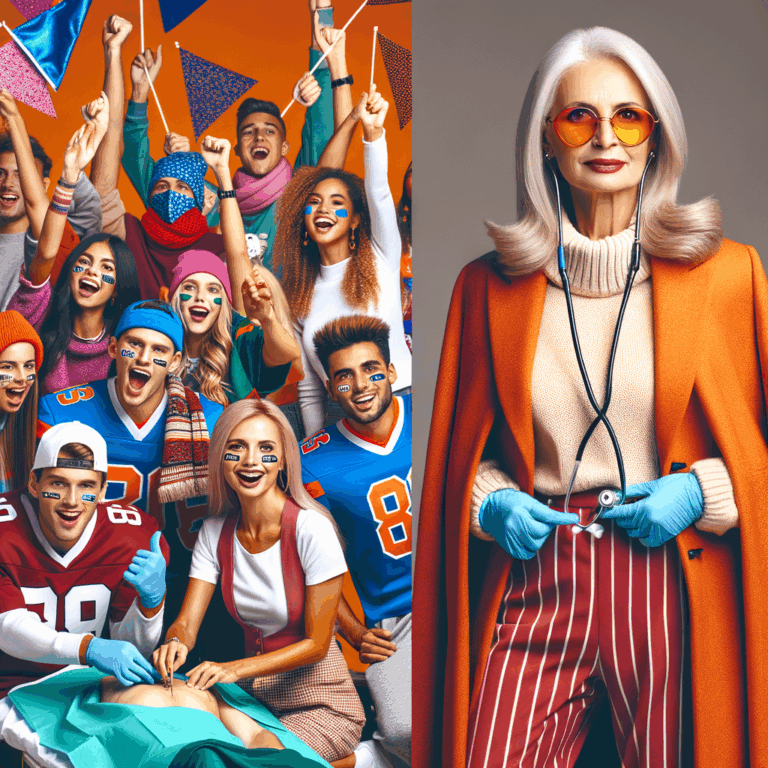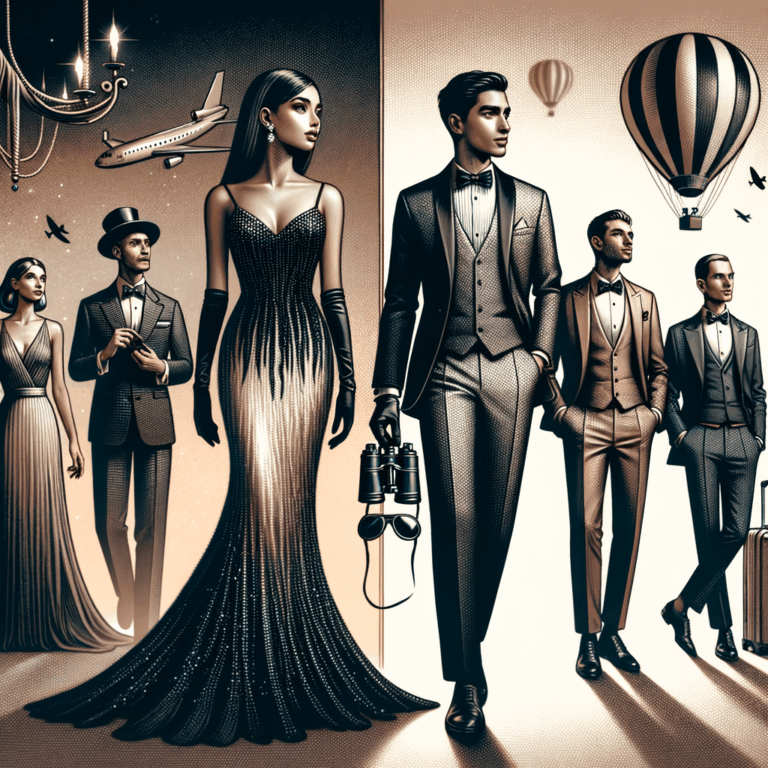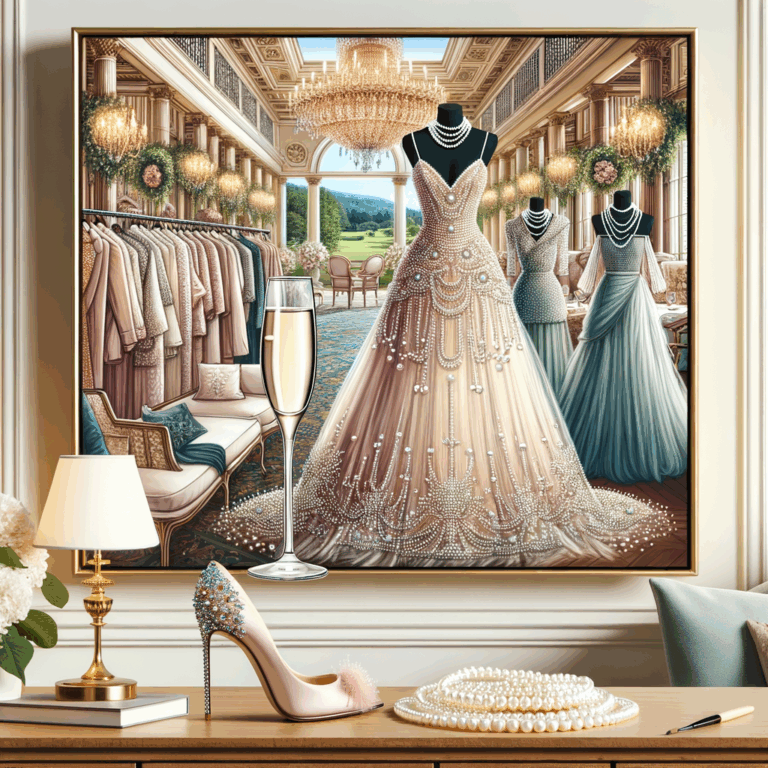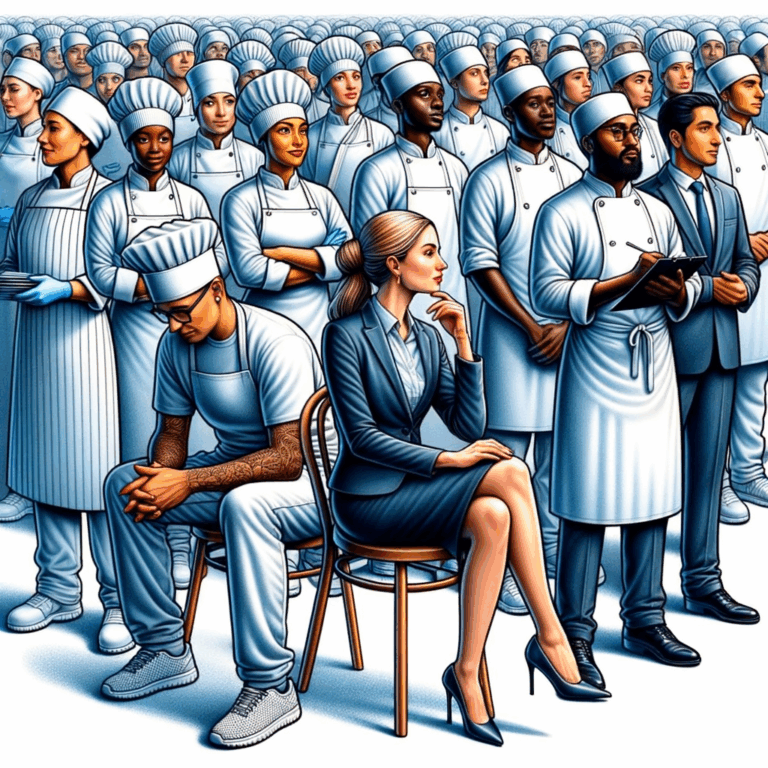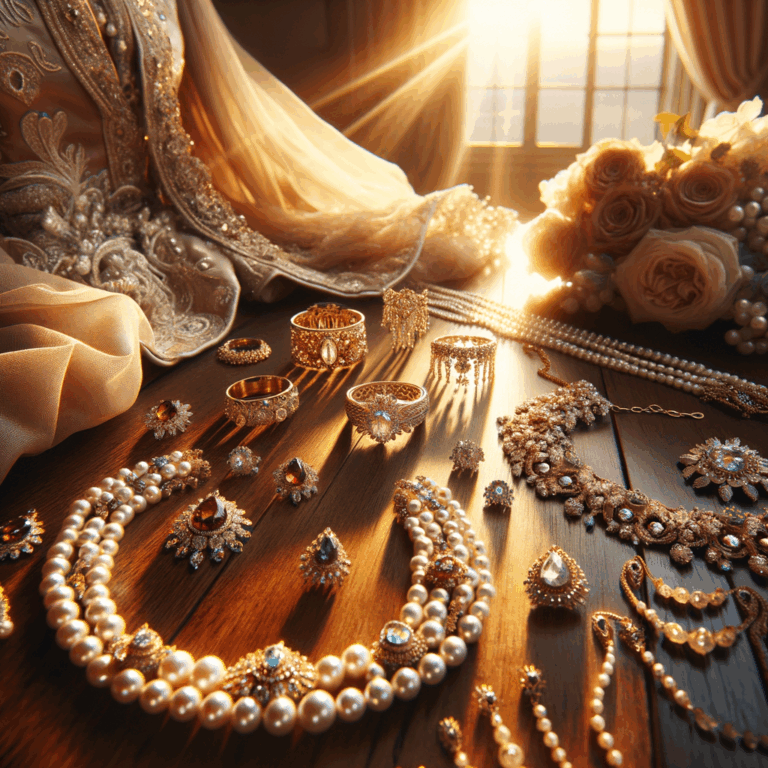
Blog
“Gender-bending cinema at its finest.”
Introduction
Movies where men dress as women have been a popular theme in the entertainment industry for many years. These films often explore themes of gender identity, comedy, and social commentary. They can range from light-hearted comedies to more serious dramas, and have been a source of entertainment and discussion for audiences worldwide.
Exploring Gender Roles: Men Dressing as Women in Movies
Movies have always been a powerful medium for exploring and challenging societal norms. One area where this exploration has been particularly fascinating is in the realm of gender roles. In many movies, we have seen men taking on the challenge of dressing as women, and the results have been both entertaining and thought-provoking.
One of the most iconic examples of men dressing as women in movies is the classic comedy “Some Like It Hot.” In this film, Tony Curtis and Jack Lemmon play musicians who witness a mob hit and go into hiding by disguising themselves as women in an all-female band. The film is a hilarious exploration of gender identity and the lengths people will go to in order to survive. Curtis and Lemmon’s performances are both comedic and touching, and the film remains a beloved classic to this day.
Another film that delves into the world of men dressing as women is “Tootsie.” In this comedy, Dustin Hoffman plays an out-of-work actor who disguises himself as a woman in order to land a role on a soap opera. As he navigates the world as a woman, he gains a new perspective on the challenges and expectations placed on women in society. Hoffman’s performance is both funny and poignant, and the film raises important questions about gender and identity.
In recent years, we have seen a resurgence of movies that explore men dressing as women. One such film is “Mrs. Doubtfire,” in which Robin Williams plays a divorced father who disguises himself as a female housekeeper in order to spend more time with his children. The film is a heartwarming exploration of the lengths parents will go to in order to be with their children, and Williams’ performance is both hilarious and touching.
Another recent example is “Hairspray,” a musical comedy in which John Travolta plays Edna Turnblad, a larger-than-life mother who supports her daughter’s dreams of becoming a dancer. Travolta’s portrayal of Edna is both funny and endearing, and the film celebrates the power of self-acceptance and embracing who you truly are.
These movies, and many others like them, challenge traditional notions of gender and encourage audiences to question societal expectations. They remind us that gender is not a rigid construct, but rather a fluid and complex aspect of our identities. By portraying men dressing as women, these films open up a dialogue about the ways in which gender roles are constructed and the impact they have on individuals and society as a whole.
In conclusion, movies that explore men dressing as women are not only entertaining, but also serve as a powerful tool for challenging societal norms and expectations. They encourage us to question the limitations placed on individuals based on their gender and to embrace the idea that identity is not fixed, but rather a personal journey of self-discovery. These films remind us that we are all capable of transcending societal expectations and embracing our true selves, regardless of the gender roles assigned to us. So the next time you watch a movie where men dress as women, take a moment to reflect on the deeper messages and themes being explored. You may just find yourself inspired to challenge the status quo and embrace your own unique identity.
Breaking Stereotypes: Male Cross-Dressing in Film
Movies Where Men Dress as Women
In the world of film, there are countless stories that have captivated audiences and left a lasting impact. From heartwarming tales of love and friendship to thrilling adventures that transport us to far-off lands, movies have the power to inspire and challenge our perceptions. One area where cinema has been particularly effective in breaking stereotypes is through the portrayal of male cross-dressing.
For centuries, gender roles have been deeply ingrained in society, dictating how men and women should behave and present themselves. However, in recent years, there has been a shift towards challenging these norms and embracing diversity. Male cross-dressing in film is one way that this change has been reflected, allowing audiences to question traditional gender expectations and explore the fluidity of identity.
One of the most iconic examples of male cross-dressing in film is the 1993 comedy “Mrs. Doubtfire.” In this heartwarming tale, Robin Williams plays a divorced father who disguises himself as a British nanny in order to spend more time with his children. Through his transformation, Williams not only delivers a hilarious performance but also challenges the notion that only women can be nurturing caregivers. The film reminds us that love and care are not limited by gender, and that a father’s role in his children’s lives is just as important as a mother’s.
Another film that pushes the boundaries of gender expectations is the 2004 comedy “White Chicks.” In this outrageous comedy, Shawn and Marlon Wayans play two FBI agents who go undercover as white women to solve a kidnapping case. Through their exaggerated portrayal of femininity, the Wayans brothers not only provide endless laughs but also highlight the absurdity of societal beauty standards. By donning wigs, makeup, and high heels, they challenge the idea that women should conform to a specific ideal of beauty, reminding us that true beauty comes from within.
In addition to comedies, there are also films that explore the more serious aspects of male cross-dressing. One such example is the 1999 drama “Boys Don’t Cry,” based on the true story of Brandon Teena, a transgender man who was brutally murdered. Hilary Swank delivers a powerful performance as Brandon, a young man who presents himself as male despite being assigned female at birth. Through this heartbreaking story, the film sheds light on the struggles faced by transgender individuals and the importance of acceptance and understanding.
While these films may be fictional, they have the power to inspire real change in society. By challenging traditional gender roles and stereotypes, they encourage us to question our own beliefs and prejudices. They remind us that identity is not fixed, but rather a complex and ever-evolving concept. They teach us that it is okay to be different, to defy societal expectations, and to embrace our true selves.
In conclusion, male cross-dressing in film is a powerful tool for breaking stereotypes and challenging traditional gender roles. Through movies like “Mrs. Doubtfire,” “White Chicks,” and “Boys Don’t Cry,” audiences are given the opportunity to question societal norms and explore the fluidity of identity. These films inspire us to embrace diversity, challenge our own beliefs, and create a more inclusive and accepting world. So the next time you watch a movie where men dress as women, remember the impact it can have and the stereotypes it can break.
Iconic Male-to-Female Transformations in Movies
Movies have the power to transport us to different worlds, to make us laugh, cry, and feel a range of emotions. They can also challenge societal norms and push boundaries, and one way they have done this is through male-to-female transformations on the big screen. These iconic transformations have not only entertained audiences but have also inspired and empowered individuals around the world.
One of the most memorable male-to-female transformations in movie history is Robin Williams’ portrayal of Mrs. Doubtfire in the 1993 film of the same name. Williams plays a divorced father who disguises himself as a female housekeeper in order to spend more time with his children. This heartwarming and hilarious film not only showcases Williams’ incredible comedic talent but also explores themes of love, family, and the lengths we will go to for those we care about.
Another iconic transformation can be seen in the 1996 film “The Birdcage,” starring Robin Williams and Nathan Lane. In this comedy, Williams plays a gay nightclub owner who must pretend to be straight when his son announces his engagement to the daughter of a conservative politician. Williams’ character goes to great lengths to transform himself into a woman, showcasing the power of love and acceptance.
In the 2005 film “Transamerica,” Felicity Huffman delivers a powerful performance as a transgender woman named Bree. The film follows Bree’s journey as she prepares for gender confirmation surgery and discovers that she has a son she never knew about. Huffman’s portrayal is both sensitive and authentic, shedding light on the struggles and triumphs of the transgender community.
Eddie Redmayne’s portrayal of Lili Elbe in the 2015 film “The Danish Girl” is another transformative performance that deserves recognition. The film tells the true story of Elbe, one of the first known recipients of gender confirmation surgery. Redmayne’s portrayal is both delicate and powerful, capturing the emotional and physical journey of a transgender woman in the early 20th century.
In recent years, the groundbreaking film “Tangerine” has gained attention for its portrayal of transgender characters played by transgender actresses. The film follows two transgender sex workers on Christmas Eve as they navigate the streets of Los Angeles. The performances by Kitana Kiki Rodriguez and Mya Taylor are raw and authentic, shedding light on the experiences of transgender individuals often overlooked by mainstream media.
These male-to-female transformations in movies have not only entertained audiences but have also challenged societal norms and sparked important conversations about gender identity and acceptance. They have shown us that anyone can be whoever they want to be, regardless of societal expectations or norms. These films have inspired individuals around the world to embrace their true selves and to fight for equality and acceptance.
In conclusion, male-to-female transformations in movies have had a profound impact on audiences. From the comedic genius of Robin Williams in “Mrs. Doubtfire” and “The Birdcage” to the powerful performances of Felicity Huffman in “Transamerica” and Eddie Redmayne in “The Danish Girl,” these films have pushed boundaries and inspired individuals to embrace their true selves. They have shown us that gender is not a limitation and that everyone deserves love, acceptance, and the freedom to be who they truly are.
The Art of Drag: Men Portraying Women on the Big Screen
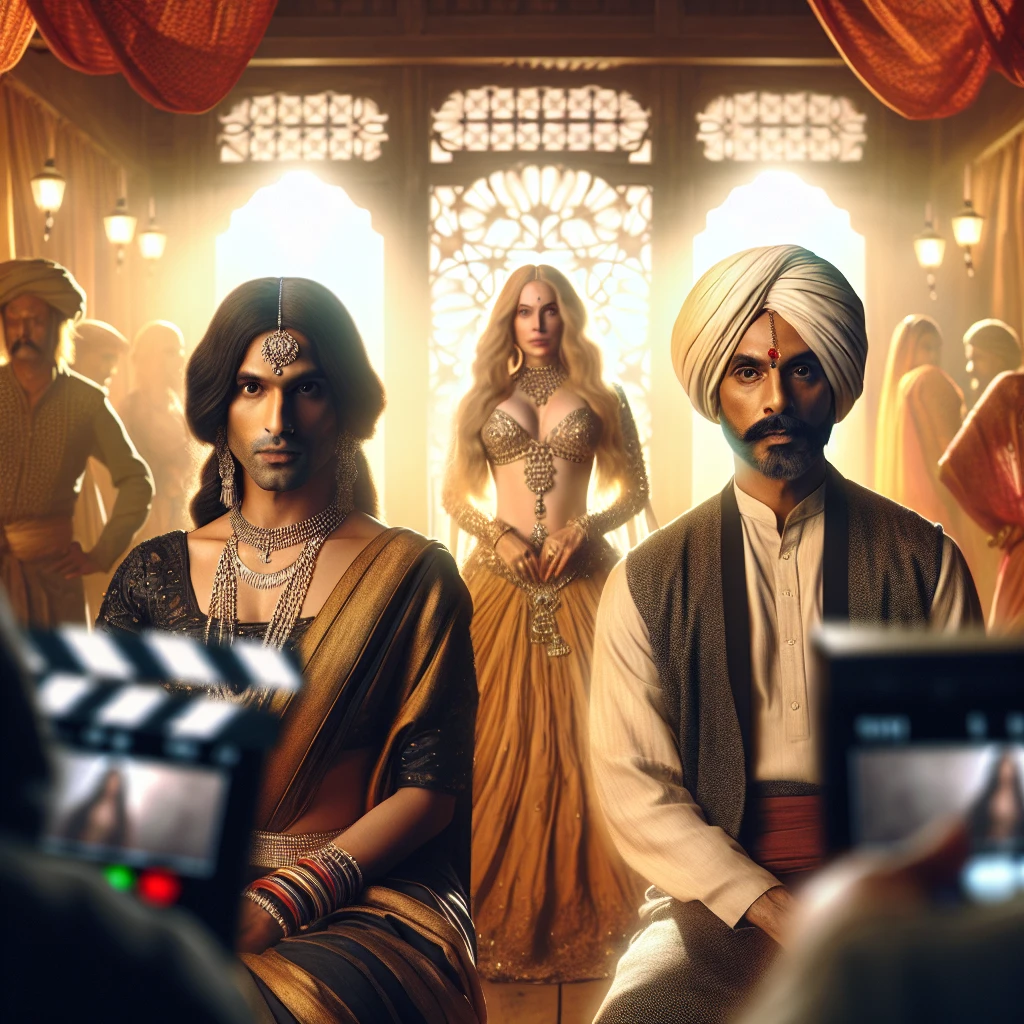
Movies have always been a medium for storytelling and self-expression. They allow us to escape reality and immerse ourselves in different worlds and characters. One aspect of filmmaking that has captivated audiences for decades is the art of drag, where men portray women on the big screen. This unique form of performance has not only entertained audiences but has also challenged societal norms and pushed the boundaries of gender representation.
Throughout cinematic history, there have been numerous movies that have showcased the art of drag. These films have not only provided entertainment but have also served as a platform for social commentary and exploration of gender identity. One such iconic film is “Tootsie,” released in 1982. In this film, Dustin Hoffman plays the role of Michael Dorsey, a struggling actor who disguises himself as a woman to land a job on a soap opera. Through his portrayal of Dorothy Michaels, Hoffman not only delivers a brilliant performance but also sheds light on the challenges faced by women in the entertainment industry.
Another notable film that explores the art of drag is “Mrs. Doubtfire,” released in 1993. In this heartwarming comedy, Robin Williams plays the role of Daniel Hillard, a divorced father who disguises himself as a female housekeeper to spend more time with his children. Williams’ portrayal of Mrs. Doubtfire not only showcases his comedic genius but also highlights the importance of family and the lengths a parent would go to be with their children.
In recent years, the art of drag has gained even more recognition and acceptance, thanks in part to the success of the television show “RuPaul’s Drag Race.” This reality competition series has not only introduced audiences to talented drag performers but has also provided a platform for them to showcase their creativity and individuality. The show has inspired a new generation of drag artists and has brought the art form into the mainstream.
One film that beautifully captures the essence of drag is “Priscilla, Queen of the Desert,” released in 1994. This Australian comedy-drama follows the journey of two drag queens and a transgender woman as they travel across the Australian Outback in a tour bus named “Priscilla.” The film not only celebrates the art of drag but also explores themes of acceptance, identity, and the power of self-expression.
The art of drag is not limited to comedy or drama; it has also made its mark in the world of musicals. One such example is the film adaptation of the Broadway musical “Hairspray,” released in 2007. In this vibrant and energetic film, John Travolta portrays the role of Edna Turnblad, a plus-sized woman who becomes an advocate for racial integration in 1960s Baltimore. Travolta’s performance not only showcases his versatility as an actor but also highlights the power of acceptance and inclusivity.
The art of drag is a testament to the power of self-expression and the ability to challenge societal norms. Through their performances, these actors have not only entertained audiences but have also inspired individuals to embrace their true selves and celebrate their uniqueness. Whether it’s through comedy, drama, or musicals, the art of drag continues to captivate audiences and push the boundaries of gender representation on the big screen.
In conclusion, the art of drag has played a significant role in the world of cinema. From iconic films like “Tootsie” and “Mrs. Doubtfire” to more recent successes like “Priscilla, Queen of the Desert” and “Hairspray,” these movies have not only entertained but have also challenged societal norms and inspired individuals to embrace their true selves. The art of drag is a celebration of self-expression and a reminder that we should all be free to be who we truly are. So the next time you watch a movie where men dress as women, take a moment to appreciate the creativity, talent, and courage it takes to bring these characters to life.
Gender-Bending Characters: Men Embracing Femininity in Film
In the world of film, there have been countless instances where actors have taken on the challenge of portraying characters of the opposite gender. These gender-bending performances have not only showcased the versatility and talent of these actors, but they have also challenged societal norms and opened up discussions about gender identity and expression. From iconic classics to modern masterpieces, these movies have left a lasting impact on audiences and have inspired individuals to embrace their own femininity.
One of the most memorable examples of men dressing as women in film is the 1959 classic “Some Like It Hot.” Starring Tony Curtis and Jack Lemmon, the film tells the story of two musicians who witness a mob hit and go into hiding by disguising themselves as women in an all-female band. The film is a comedic masterpiece, with Curtis and Lemmon delivering hilarious performances as they navigate the challenges of living as women. Their ability to embrace femininity and convincingly portray female characters is a testament to their acting skills and their willingness to step outside of societal expectations.
Another film that explores the theme of men embracing femininity is “Tootsie” from 1982. In this comedy-drama, Dustin Hoffman plays Michael Dorsey, an actor who disguises himself as a woman in order to secure a role on a soap opera. As he immerses himself in the world of women, Michael begins to gain a deeper understanding and appreciation for the challenges they face. Through his transformation, he learns valuable lessons about empathy, respect, and the importance of authenticity. Hoffman’s portrayal of Michael is both comedic and heartfelt, and it serves as a reminder that gender is not a barrier to understanding and connecting with others.
In recent years, the film industry has continued to explore the concept of men dressing as women in more nuanced and thought-provoking ways. One such example is the 2015 film “Tangerine,” directed by Sean Baker. The film follows the story of two transgender women, played by Kitana Kiki Rodriguez and Mya Taylor, as they navigate the streets of Los Angeles on Christmas Eve. While the film focuses on the experiences of transgender women, it also challenges traditional notions of gender by featuring a cisgender male actor, James Ransone, in a supporting role as a male taxi driver. This casting choice adds another layer of complexity to the film’s exploration of gender identity and expression.
These movies, and many others like them, have had a profound impact on audiences around the world. They have sparked conversations about gender identity and expression, and they have inspired individuals to embrace their own femininity, regardless of societal expectations. By challenging traditional gender roles and showcasing the talent and versatility of actors, these films have paved the way for greater acceptance and understanding of diverse gender identities.
In conclusion, the world of film has provided a platform for men to embrace femininity and challenge societal norms. From the iconic performances in “Some Like It Hot” and “Tootsie” to the more recent exploration of gender identity in “Tangerine,” these movies have inspired audiences and opened up discussions about gender expression. By portraying characters of the opposite gender, these actors have shown that gender is not a barrier to understanding and connecting with others. They have encouraged individuals to embrace their own femininity and to challenge societal expectations. As we continue to push the boundaries of gender representation in film, we can look to these movies as a source of inspiration and a reminder that true talent knows no gender.
Comedic Cross-Dressing: Hilarious Moments in Movies
Movies have always been a source of entertainment and laughter for people all over the world. They allow us to escape from reality and immerse ourselves in a world of imagination and creativity. One particular aspect of movies that has always brought a smile to our faces is comedic cross-dressing. The idea of men dressing up as women for comedic effect has been a staple in the film industry for decades, and it never fails to elicit laughter from audiences.
One of the most iconic movies that features men dressing as women is “Some Like It Hot.” Released in 1959, this classic comedy stars Tony Curtis and Jack Lemmon as two musicians who witness a mob hit and go into hiding by disguising themselves as women in an all-female band. The film is filled with hilarious moments as Curtis and Lemmon navigate the challenges of pretending to be women while trying to avoid being discovered. Their comedic timing and physical comedy make this movie a timeless classic that continues to entertain audiences to this day.
Another movie that showcases the comedic genius of men dressing as women is “Tootsie.” Released in 1982, this film stars Dustin Hoffman as an out-of-work actor who disguises himself as a woman to land a role on a soap opera. Hoffman’s portrayal of Dorothy Michaels is nothing short of brilliant, as he perfectly captures the mannerisms and nuances of a woman. The movie not only provides plenty of laughs but also explores themes of gender roles and societal expectations. It serves as a reminder that sometimes, stepping into someone else’s shoes can lead to a greater understanding of ourselves and others.
In more recent years, movies like “White Chicks” have taken comedic cross-dressing to a whole new level. Released in 2004, this film stars Shawn and Marlon Wayans as two FBI agents who go undercover as white women to solve a kidnapping case. The movie is filled with outrageous humor and over-the-top situations that keep audiences laughing from start to finish. While some may argue that the film relies on stereotypes for its humor, there’s no denying that it delivers on its promise of providing a hilarious and entertaining experience.
Comedic cross-dressing in movies is not just about the laughs; it also serves as a commentary on gender and identity. By challenging traditional gender roles and expectations, these films encourage us to question societal norms and embrace our own individuality. They remind us that it’s okay to step outside of our comfort zones and explore different aspects of ourselves.
In conclusion, comedic cross-dressing in movies has always been a source of laughter and entertainment. From classic films like “Some Like It Hot” to more recent releases like “White Chicks,” these movies provide us with hilarious moments and thought-provoking themes. They remind us to embrace our own uniqueness and challenge societal expectations. So the next time you’re in the mood for a good laugh, why not give one of these movies a try? You might just find yourself inspired to step into someone else’s shoes and see the world from a different perspective.
Challenging Norms: Men in Women’s Clothing in Cinema
Movies have always been a powerful medium for challenging societal norms and pushing the boundaries of what is considered acceptable. One particular area where cinema has been successful in challenging norms is in the portrayal of men dressing as women. This unconventional choice has been used to explore themes of gender identity, sexuality, and the fluidity of human expression. These movies not only entertain but also inspire viewers to question the rigid constructs that society imposes on gender roles.
One iconic film that comes to mind is “Tootsie,” released in 1982. In this comedy-drama, Dustin Hoffman plays Michael Dorsey, a struggling actor who disguises himself as a woman to land a role on a soap opera. Through his transformation into the character of Dorothy Michaels, Michael gains a newfound understanding of the challenges women face in the workplace. The film not only provides laughs but also serves as a commentary on gender inequality and the need for empathy and understanding.
Another film that challenges norms is “Mrs. Doubtfire,” released in 1993. Robin Williams portrays Daniel Hillard, a divorced father who dresses up as a British nanny to spend more time with his children. This heartwarming comedy explores the lengths a parent will go to maintain a relationship with their children, regardless of societal expectations. Williams’ performance as Mrs. Doubtfire is both hilarious and touching, reminding us that love and family transcend traditional gender roles.
Moving forward, the 21st century has seen a surge in movies that explore gender identity and the fluidity of expression. One such film is “Boys Don’t Cry,” released in 1999. Based on a true story, Hilary Swank delivers a powerful performance as Brandon Teena, a transgender man navigating his identity in a small town. The film challenges societal norms by shedding light on the struggles faced by transgender individuals and the importance of acceptance and understanding.
In recent years, the critically acclaimed film “Dallas Buyers Club” has further pushed the boundaries of gender representation. Matthew McConaughey portrays Ron Woodroof, a heterosexual man diagnosed with HIV/AIDS in the 1980s. As Ron fights for his life, he forms an unlikely alliance with a transgender woman, played by Jared Leto. Leto’s portrayal of Rayon, a character who defies traditional gender norms, earned him an Academy Award for Best Supporting Actor. This film not only challenges societal norms but also highlights the importance of compassion and solidarity in the face of adversity.
These movies serve as a reminder that gender is not a rigid construct but rather a spectrum of identities and expressions. By portraying men dressing as women, cinema challenges the notion that gender is binary and fixed. These films inspire viewers to question societal expectations and embrace the diversity of human experience.
In conclusion, movies that feature men dressing as women have played a significant role in challenging societal norms and promoting inclusivity. From the comedic brilliance of “Tootsie” and “Mrs. Doubtfire” to the thought-provoking narratives of “Boys Don’t Cry” and “Dallas Buyers Club,” these films encourage viewers to question the limitations imposed by gender roles. By embracing the fluidity of human expression, cinema inspires us to celebrate our individuality and reject the confines of societal expectations.
Historical Perspectives: Men Dressing as Women in Period Films
Movies have always been a powerful medium for storytelling, allowing us to escape into different worlds and experience the lives of characters who are vastly different from ourselves. One fascinating aspect of cinema is the ability to explore gender roles and identities, and one particular trope that has captivated audiences throughout history is men dressing as women in period films.
From Shakespearean plays to modern-day adaptations, the concept of men donning women’s clothing has been a recurring theme in storytelling. This practice dates back to ancient Greece, where men played both male and female roles in theater. The reasons behind this tradition were practical, as women were not allowed to perform on stage at the time. However, it also added an element of intrigue and entertainment, as audiences marveled at the skill of these male actors in portraying female characters.
In the world of cinema, this tradition continued to thrive. In the early days of silent films, male actors often played female roles due to the limited number of female performers. This trend continued well into the 20th century, with actors like Charlie Chaplin and Buster Keaton donning dresses and wigs to portray comedic female characters. These performances were not only hilarious but also challenged societal norms and expectations, highlighting the fluidity of gender roles.
As time went on, the portrayal of men dressing as women in films became more nuanced and complex. In period films, this trope often served as a means of exploring themes of identity, disguise, and subversion. One notable example is the film “Tootsie” (1982), in which Dustin Hoffman plays a struggling actor who disguises himself as a woman to land a role. Through his transformation, Hoffman’s character gains a newfound understanding of the challenges faced by women in society and learns to empathize with their experiences.
Another film that delves into the complexities of men dressing as women is “Victor/Victoria” (1982), starring Julie Andrews. In this musical comedy, Andrews plays a woman who poses as a man who poses as a woman, blurring the lines between gender and challenging societal expectations. The film not only showcases Andrews’ incredible talent but also serves as a commentary on the fluidity of gender and the limitations imposed by societal norms.
In recent years, there has been a resurgence of interest in period films that explore the theme of men dressing as women. One such example is “The Favourite” (2018), a dark comedy set in the 18th century. In this film, actors like Olivia Colman, Emma Stone, and Rachel Weisz portray complex female characters who manipulate and vie for power. Their performances challenge traditional notions of femininity and highlight the ways in which women have historically navigated a male-dominated world.
In conclusion, men dressing as women in period films is a fascinating trope that has been explored throughout the history of cinema. From ancient Greek theater to modern-day blockbusters, this practice has served as a means of challenging societal norms, exploring themes of identity and disguise, and highlighting the fluidity of gender roles. These films not only entertain but also inspire us to question and reimagine the world around us. So the next time you watch a movie where men dress as women, take a moment to appreciate the artistry and the deeper messages that lie beneath the surface.
The Evolution of Cross-Dressing in Movies
Movies Where Men Dress as Women: The Evolution of Cross-Dressing in Movies
Throughout the history of cinema, there have been countless instances where men have donned women’s clothing for comedic effect or to challenge societal norms. This practice, known as cross-dressing, has evolved over time, reflecting the changing attitudes towards gender and identity. From the early days of silent films to the present day, these movies have not only entertained audiences but also inspired conversations about gender roles and the fluidity of identity.
In the early 20th century, cross-dressing in movies was primarily used for comedic purposes. Films like “Some Like It Hot” and “Tootsie” showcased men disguising themselves as women to navigate tricky situations or pursue romantic interests. These movies provided audiences with a lighthearted escape from reality, allowing them to laugh at the absurdity of the situations these characters found themselves in.
As the decades passed, however, cross-dressing in movies began to take on a deeper meaning. Filmmakers started using this trope to challenge societal norms and explore the complexities of gender identity. Movies like “Boys Don’t Cry” and “The Crying Game” delved into the struggles faced by individuals who don’t conform to traditional gender roles. These films shed light on the discrimination and violence that transgender individuals often face, sparking important conversations about acceptance and understanding.
In recent years, cross-dressing in movies has become even more nuanced and thought-provoking. Films like “Dallas Buyers Club” and “The Danish Girl” have explored the experiences of individuals who identify as transgender. These movies have not only garnered critical acclaim but have also played a crucial role in increasing visibility and understanding of the transgender community.
The evolution of cross-dressing in movies reflects society’s changing attitudes towards gender and identity. As our understanding of gender becomes more fluid, filmmakers are using this trope to challenge traditional notions of masculinity and femininity. By portraying men who dress as women with empathy and respect, these movies encourage audiences to question the rigid gender roles that society often imposes.
Furthermore, the evolution of cross-dressing in movies has also paved the way for greater representation and inclusivity in the film industry. By casting transgender actors in roles that accurately reflect their experiences, filmmakers are giving a voice to a marginalized community. This not only provides opportunities for transgender actors but also helps to break down stereotypes and misconceptions surrounding gender identity.
In conclusion, the evolution of cross-dressing in movies has been a fascinating journey. From its early days as a comedic device to its current role in challenging societal norms, this trope has played a significant role in shaping conversations about gender and identity. As filmmakers continue to explore the complexities of gender through their storytelling, we can hope for a future where diversity and inclusivity are celebrated on the silver screen. So, the next time you watch a movie where a man dresses as a woman, take a moment to appreciate the impact it has on our understanding of gender and the power of cinema to inspire change.
Gender Identity Exploration: Men’s Cross-Dressing Journeys in Film
Movies Where Men Dress as Women
Gender identity exploration has been a recurring theme in cinema for decades. One particular aspect of this exploration is men dressing as women, a concept that has fascinated audiences and challenged societal norms. These movies not only entertain but also inspire viewers to question the boundaries of gender and embrace their true selves.
One iconic film that comes to mind is “Tootsie,” released in 1982. In this comedy-drama, Dustin Hoffman plays Michael Dorsey, a struggling actor who disguises himself as a woman to land a role on a soap opera. Through his transformation into the charming and witty Dorothy Michaels, Michael learns valuable lessons about empathy, love, and the struggles women face in a male-dominated industry. “Tootsie” not only showcases the comedic talents of Hoffman but also serves as a reminder that gender is not a rigid construct but rather a fluid spectrum.
Another film that explores the theme of men dressing as women is “Mrs. Doubtfire,” released in 1993. Robin Williams portrays Daniel Hillard, a divorced father who disguises himself as a British nanny to spend more time with his children. This heartwarming comedy delves into the challenges of parenting, the importance of family, and the lengths one would go to maintain a connection with their loved ones. Williams’ portrayal of Mrs. Doubtfire is both hilarious and touching, reminding us that gender roles should not limit our ability to express love and care for those we hold dear.
Moving on to a more recent film, “The Danish Girl” (2015) tells the extraordinary true story of Lili Elbe, one of the first known recipients of gender confirmation surgery. Eddie Redmayne delivers a breathtaking performance as Einar Wegener, a landscape painter who discovers his true identity as a woman. The film explores Einar’s journey of self-discovery, the challenges faced by transgender individuals, and the unwavering support of his wife, Gerda, played by Alicia Vikander. “The Danish Girl” is a poignant and visually stunning film that encourages viewers to embrace their authentic selves and challenges societal expectations.
In addition to these well-known films, there are countless other examples of men dressing as women in cinema. From the classic comedy “Some Like It Hot” (1959) to the thought-provoking drama “Boys Don’t Cry” (1999), these movies provide a platform for exploring gender identity and the complexities of human experience.
What makes these films truly inspirational is their ability to transcend the screen and spark conversations about gender norms and societal expectations. They encourage viewers to question the limitations imposed by society and embrace their own unique identities. By portraying men dressing as women, these movies challenge the notion that gender is a binary concept and instead celebrate the diversity of human expression.
In conclusion, movies where men dress as women have played a significant role in gender identity exploration in film. From the comedic brilliance of “Tootsie” to the emotional depth of “The Danish Girl,” these films inspire us to embrace our true selves and challenge societal norms. They remind us that gender is not a rigid construct but rather a fluid spectrum, and that true happiness lies in embracing our authentic identities. So, the next time you watch a movie where a man dresses as a woman, remember the powerful message it carries and let it inspire you to explore your own journey of self-discovery.
Q&A
1. What are some movies where men dress as women?
Some Like It Hot (1959), Tootsie (1982), Mrs. Doubtfire (1993), White Chicks (2004), Hairspray (2007).
2. Who are the main actors in the movie “Some Like It Hot”?
Tony Curtis, Jack Lemmon, Marilyn Monroe.
3. What is the plot of the movie “Tootsie”?
An unemployed actor disguises himself as a woman to land a role on a soap opera, but complications arise when he falls in love with his co-star.
4. Who stars in the movie “Mrs. Doubtfire”?
Robin Williams, Sally Field, Pierce Brosnan.
5. What is the premise of the movie “White Chicks”?
Two FBI agents go undercover as white women to solve a kidnapping case.
6. Who are the main actors in the movie “Hairspray”?
John Travolta, Michelle Pfeiffer, Christopher Walken, Zac Efron.
7. What are some other movies where men dress as women?
Some other examples include Tootsie (1982), Victor/Victoria (1982), The Birdcage (1996), Juwanna Mann (2002), and Big Momma’s House (2000).
8. Who stars in the movie “Victor/Victoria”?
Julie Andrews, James Garner, Robert Preston.
9. What is the plot of the movie “The Birdcage”?
A gay cabaret owner and his drag queen partner agree to put up a false straight front when their son’s future in-laws come to visit.
10. Who stars in the movie “Juwanna Mann”?
Miguel A. Núñez Jr., Vivica A. Fox, Tommy Davidson.
Conclusion
Movies where men dress as women have been a popular theme in the entertainment industry. These movies often explore themes of gender identity, comedy, and social commentary. They have provided audiences with laughter, entertainment, and thought-provoking moments. Whether it’s for comedic effect or to challenge societal norms, these movies have been successful in capturing the attention of viewers and sparking conversations about gender roles and stereotypes.
Related Posts
What to Wear to a Tennis Match: Stunning Picks
Looking to ace your style game at the next tennis match? Discover how a chic blue hoodie can become your winning choice, blending casual comfort with a dash of courtside chic.
Stunning Black Tie Attire: Effortless Elegance Unveiled
Whether youre deciding what to wear at a concert or a high-society gala, discovering your ideal black tie outfit is all about embracing effortless elegance that echoes your unique style and sophistication. Lets dive into crafting that perfect, head-turning ensemble together.
Egypt Dress Code: Must-Have Tips for Female Tourists
Navigating the dress code in Egypt can feel like a delicate dance, but fear not, fashionable traveler! Our expert tips will help you dress respectably while still showcasing your unique style, ensuring every moment of your journey is as comfortable as it is chic.
Must-Have Outfits for a Steam Room Visit
Step into the steam room with confidence and elegance by mastering **what to wear to a steam room**. Our guide ensures you stay effortlessly stylish and supremely comfortable, no matter the humidity!
K-Pop Concert Attire: Must-Have Outfits for Trendsetters
Step into the spotlight at your next K-Pop concert with outfits that echo the electrifying energy of BTS, BLACKPINK, or EXO! Let us guide you through selecting vibrant, trend-setting pieces that not only capture the essence of K-pop culture but also showcase your individual flair and style.
Stunning Outfits for College Football Games: Score Big!
Dress to impress at your next college football game with Covetis luxurious and spirited fashion finds! Whether you’re cheering from the bleachers or a cozy college bar, discover outfits that truly resonate with your personal style and amplify your game-day experience.
Stunning Shoe Styles for Winter Graduations!
Deciding what to wear for a winter graduation can be a breeze, especially with the right shoes! Let me guide you through picking stylish yet practical footwear that will have you walking across that stage with confidence and grace.
What to Wear: Stunning Outfits for Theater Nights
Soaring above the clouds in a hot air balloon is an unparalleled adventure, and choosing what to wear is crucial for comfort and style. Lets ensure your outfit is as breathtaking as the view, blending chic with practicality for an unforgettable aerial experience.
Country Club Chic: Must-Have Outfits for Elegant Evenings
For your next pearls and prosecco bridal shower, embrace the timeless allure of country club chic with outfits that blend classic elegance with a touch of modern sophistication. Discover how to curate that perfect ensemble that will have you radiating confidence and style at any upscale event.
Stunning & Safe: Best Outfits for Food Workers
Stepping into the courtroom as a witness requires a thoughtful selection of attire that reflects professionalism and respect. Discover the key elements of dressing appropriately for court to ensure you present a dignified and sincere image that supports the gravitas of the proceedings.
Fine Dining Fashion: Must-Have Looks for Green Blazers
Stepping into a fine dining restaurant requires a touch of elegance and a dash of style; discover how a sophisticated green blazer can elevate your next gourmet outing, ensuring you look as exquisite as the dishes being served.
Stunning Jewelry Must-Haves for Bridesmaids
Deciding what jewelry to wear as a bridesmaid is more than just adornment; its about crafting moments and memories. Let me guide you through selecting stunning pieces that complement the bridal glow and celebrate your unique touch to the day’s enchantment.















